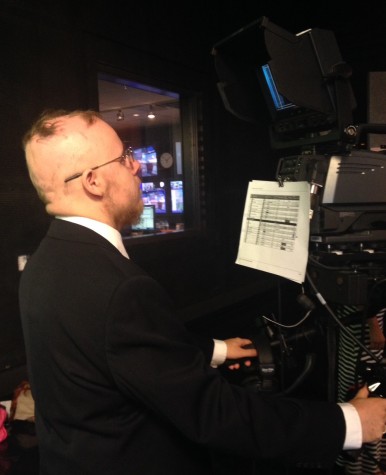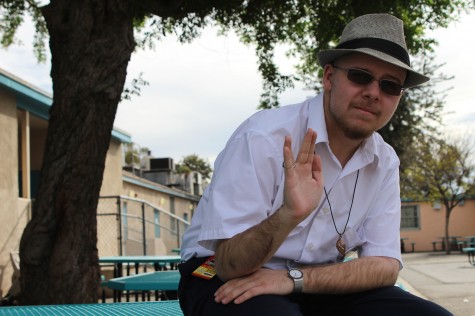Sun’s out, stay inside: my two weeks at ASU’s (really hot) summer program
For two weeks this past summer, I got to endure the blistering Arizona heat as part of a learning experience. This wasn’t some tribal rite of passage, but the Summer Journalism Institute at Arizona State University’s (ASU) Walter Cronkite School of Mass Communications, also known as the much shorter SJI.
SJI was a really great experience for me. I got to hang out with a multitude of different people and have a lot of fun, some of it journalism related, some of it not.
The journalism camp, the thing I was selected to come to, was broken into two groups: the Digital Media group and the Broadcast group, which is the one I was in.
The Digital Media folks worked more on the written aspects of journalism, going out and doing interviews, then coming back and typing up a story for the program’s blog, The Devil’s Dish (ASU’s mascot is the Sun Devil). They also dabbled in photography.
The Broadcast group, surprise, surprise, worked on creating news broadcasts like the ones you see every night on the 6:00 nightly news. We learned how to write scripts, do rundowns, which are the schedules for the show, as well as how to go out to film interviews and then come back and edit them into a two minute package.
During my tenure at SJI, the Broadcast group made two shows, one for each seven person team in the group. While one team did the on camera work, i.e. anchoring and the like, the other would do the off camera work, i.e. directing and shooting. Having two teams allows for smoother production and for everyone to get a taste of what it’s like to work in a news studio, both on and off screen.
The studio that we worked in was just like that of a professional news outlet like ABC or CBS. We had a large anchor desk, a side area with a TV for graphics to go with the packages, an area for the sports anchor to come in and report with the main anchors and a full, wall sized green screen for the weather report.
Behind the scenes, it was just as immense. Next to the studio was a large technical room filled with panels full of buttons and levers as well as no less than 5 large TV screens on a wall, each with a different feed for the show. We also had three large cameras on wheels, like the ones used for filming movies. Those cost $250K. Each.
During production, I directed on one production and was cameraman for the other. Being cameraman was fairly easy, just point and shoot. Sometimes you had to wheel it around a bit, but most of the time you just turned it to face whoever was speaking.

As for directing, it basically entails telling the technical director what buttons to push to switch shots and when. It sounds easy, but the whole pace of the newscast is set by you. It was simultaneously exciting and just a bit nerve-wracking.
There was more than the fun and games of production though. When we weren’t working, we often had lessons Cronkite’s lecture halls. Presenters ranged from Al McCoy, the longtime announcer for the Phoenix Suns, to Yvonne Wingett Sanchez, a well-known politics beat reporter for the Arizona Republic.
And as much fun as the “work” of the camp was, time spent relaxing with the other members that made it such a great two weeks. After a long day of production, we’d sit around in the floor lobby and swap stories, more often than not with the Stanley Cup Final or a World Cup game playing in the background. Though I’m not really a sports guy, I enjoyed watching the games because I was watching them with other people, and their excitement was infectious.
As the nights progressed, we would start to amuse ourselves in other ways. Heads Up, Cards Against Humanity and Uno were all floor favorites, with Uno being taken very seriously by all involved.
My time at SJI, morning, noon and night, was always imbued with a warm sense of camaraderie, one that made the blazing Arizona sun a bit more tolerable and my two weeks there one of the highlights of my summer.

Chris Bower is the Online Editor-in-Chief of The Pearl Post. Chris has been on staff for three years, starting as Tech Editor and then becoming Features...

